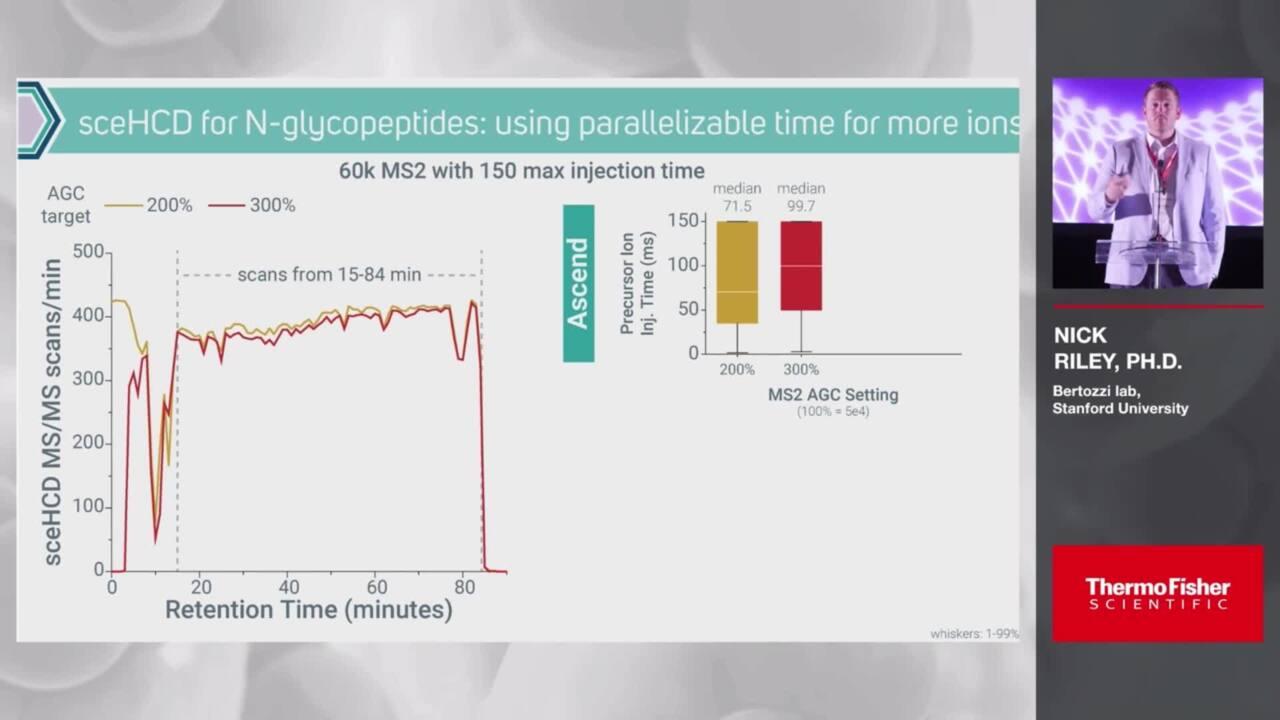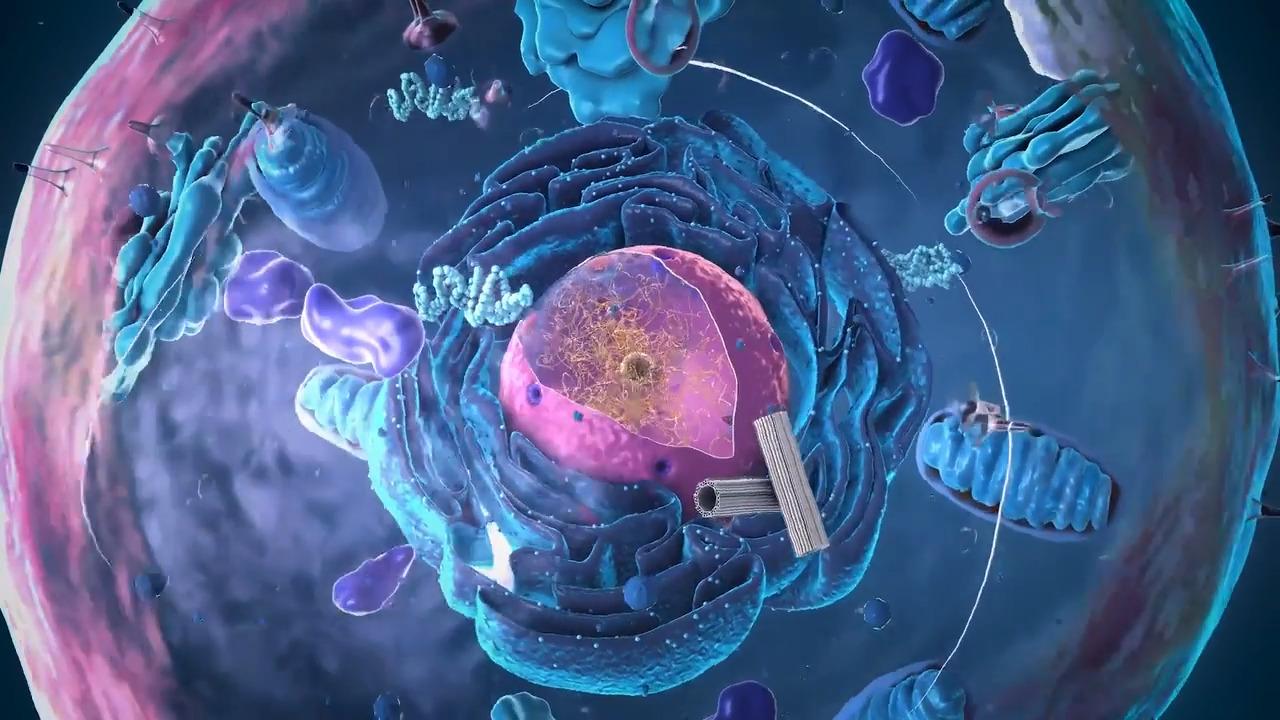Search Thermo Fisher Scientific

Scale up your MultiOmics research on our most flexible instrument
Benefit from experimental throughput, versatility, and ease-of-use. With industry leading capabilities, the Thermo Scientific Orbitrap Ascend MultiOmics Tribrid Mass Spectrometer delivers ultimate data quality. Quantify more samples at lower concentrations using intelligent acquisition and faster Real-Time Search.
Be ready for tomorrow’s most challenging demands
Achieve greater coverage using a revolutionary new hardware design featuring two ion routing multipoles and multiple orthogonal fragmentation options for worldclass results in proteomics, metabolomics, lipidomics, glycoproteomics, and glycomics.
Produce more with less instrument setup
Maximize convenience and ease-of-use with automated Auto-Ready ion source for calibration and pre-built, optimized application-specific method templates.
“Heterogeneity of protein glycosylation creates different analytical demands for any given glycoproteomic experiment. Flexibility is key. The architecture of the Orbitrap Ascend MultiOmics Tribrid MS allows for the manipulation of multiple ion populations simultaneously. This translates to more, and higher quality, MS/MS spectra that ultimately improve our glycopeptide characterization.”
Nick Riley
Assistant Professor of Chemistry
University of Washington
Applications
Quantify more low-level proteins with higher sample throughput using multiplexed quantitative proteomics
Increase in the number of low-abundant proteins that can be precisely quantified is critical to uncovering biologically important functions and highlight proteome differences. Similarly, improvement in experimental throughput is crucial, as it reduces the cost of the entire experiment, and more samples can be interrogated with shorter run times.
Experiments utilizing multiplexing isobaric tags already allow for higher throughput relative to label-free analysis, but with the higher spectral acquisition rates of the Orbitrap Ascend MultiOmics Tribrid mass spectrometer, you can expect equally high proteome coverage analyzing about 30% fewer fractions when using Thermo Scientific Tandem Mass Tag (TMT) multiplexing reagents.
The Orbitrap Ascend MultiOmics MS has been designed to excel in TMT-based isobaric tag quantitation, including when using the new Thermo Scientific TMTpro 32plex reagents, with its built-in templates for performing synchronous precursor selection (SPS) MS3 experiments further augmented with duty-cycle improving Real-Time Search. This provides the highest quantitative accuracy and throughput as a result.


Unlock unmatched analysis comparable to dedicated single-cell and DIA instruments
Along with label-based TMT quantitation, the Orbitrap Ascend MultiOmics MS enables label-free data independent acquisition (DIA) and single-cell proteomics that are far superior to dedicated instruments. On the Orbitrap Ascend MultiOmics MS, without any MS hardware changes, you can analyze samples ranging from picograms to micrograms on column.
Move from single-cell sensitivity to higher load DIA identifications with a few clicks, simply select the appropriate column and specific method templates in the software. The new software on the Orbitrap Ascend MultiOmics MS includes specific templates and a dedicated mode for single-cell sensitivity.


Glycopeptide analysis made simple with recommended electron transfer dissociation (ETD)
Glycosylation is a vital post-translational modification (PTM) involved in many cellular pathways and diseases. It is notoriously difficult due to high complexity, heterogeneity, and non-informative fragmentation generated by traditional collision-based techniques.
The Orbitrap Ascend MultiOmics MS includes unique intelligent data acquisition features that can selectively trigger additional fragmentation events using ETD or EThcD to assist in glycopeptide characterization and site localization.

In-depth immunopeptidome profiling can be achieved using dual detectors and SQUAD methodology
Immunopeptidomics provides valuable insight into the identification and characterization of peptides presented on the surface of cells and contains the major histocompatibility complex (MHC). Furthermore, identified peptides can contribute to vaccine development, drug target identification, biomarker discovery, immunotherapy development, and understanding immune responses.
Simultaneous quantitation and discovery (SQUAD) experiments can be performed on the Orbitrap Ascend MultiOmics MS combining the powerful discovery and label-free quantitation (LFQ) using the Orbitrap analyzer with the sensitive and precise targeted quantitation of the Linear Ion Trap analyzer delivering exceptional results with a single injection.
Utilizing parallel reaction monitoring (PRM) for simultaneous sequence confirmation and quantitation of target immunopeptides, and DDA- based discovery scans, enables accurate quantitation across 4 orders of magnitude while identifying thousands of immunopeptides from a single shot analysis.


The most versatile platform for deep untargeted and accurate targeted metabolomics
Simultaneous quantitation and discovery (SQUAD) strikes a balance between targeted and untargeted approaches. The unique architecture of the Orbitrap Ascend MultiOmics Tribrid MS allows for parallelization of the targeted and untargeted methods for achieving unmatched analytical depth.
The unique architecture and optimized ion transfer of the Orbitrap Ascend MultiOmics MS allows for improved metabolite identification compared with the previous models.
Lipidomics experiments benefit from AqcuireX software and alternative fragmentation capabilities
In lipidomics experiments, HCD and CID of the Orbitrap Ascend MultiOmics MS can produce complementary fragments. The differences in fragmentations can be utilized to yield comprehensive lipid annotations. One can generate diagnostic fragments of lipid fatty acid side chains using CID, while producing lipid class-characteristic backbone fragments using HCD, yielding comprehensive lipid molecular species characterization. At the same time, optional UVPD dissociation can generate unique side chain fragments to locate fatty acid double bonds.
When analyzing samples, traditional data-dependent analyses (DDA) can miss low abundant precursors. The Thermo Scientific AcquireX Software, standard on the Orbitrap Ascend MultiOmics MS, solves this issue through fully automated iterative injections, where an initial survey scan will input all viable precursors on an inclusion list automatically.
During the subsequent injections the instrument goes through the inclusion list until all precursors are selected at least once for MS2. Using this method, one can double the number of lipid identifications in the same amount of time.


Recommended & optional hardware
Recommended hardware
EASY-IC/ETD Ion Source
Easy-IC for highly accurate scan-to-scan recalibration. ETD provides orthogonal fragmentation effective in top-down proteomics and glycomics characterization.
Optional hardware
Discover Orbitrap Ascend Structural Biology MS and Orbitrap Ascend BioPharma MS
Related products
Related software
Resources
For Research Use Only. Not for use in diagnostic procedures.






